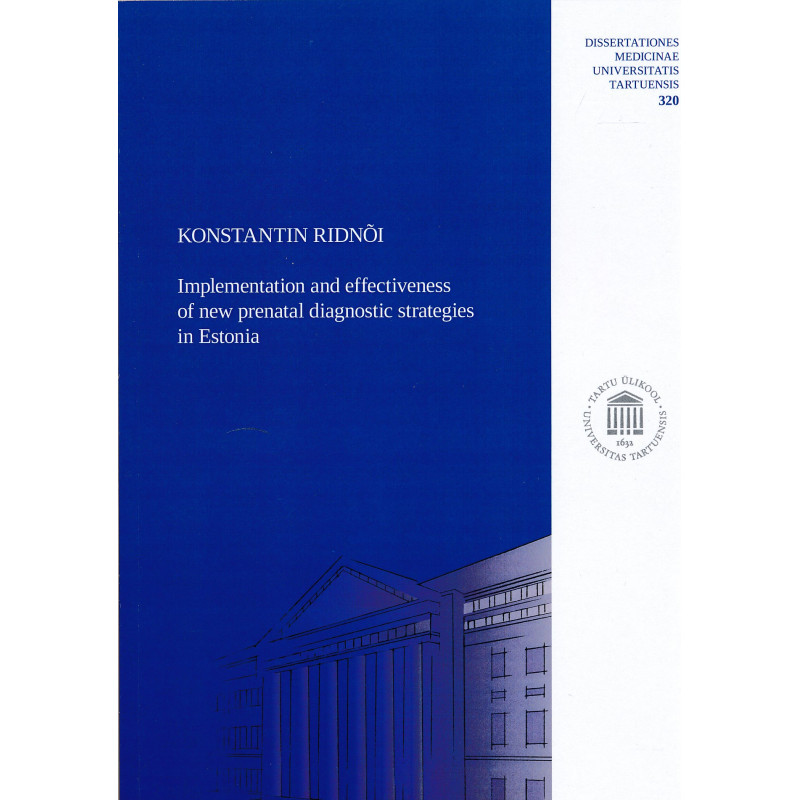



Tartu : University of Tartu Press, 2021
190 p. : ill.
ISBN: 9789949037599
Dissertationes medicinae Universitatis Tartuensis, 1024-395X ; 320
Paperback new dissertation.
The main aim of prenatal screening (PS) programs is to identify pregnancies that are at high-risk of being affected by a disease and to offer diagnostic options to these women. First-trimester combined screening (cFTS) is used in Estonia as primary PS from year 2016. During the study cFTS effectiveness was evaluated in 14,566 pregnancies, using standardized protocol. Prenatal detection rate for trisomy 21 was 94%, for trisomy 18 and trisomy 13 it was 100%. After a high-risk result from PS confirmation or exclusion of chromosomal disease is needed. Conventional karyotyping remained the first-tier diagnostic test for chromosomal disease for a long period. However, a major problem with this method was its low resolution, which did not allow the diagnosis of submicroscopic rearrangements. Chromosomal microarray analysis (CMA) is a DNA-based technology that detects genome-wide DNA losses or gains, copy-number variants, at a 100-fold higher resolution than karyotyping. During this study CMA diagnostic performance was evaluated in 334 fetuses. Additional diagnostic yield of CMA was 3.6% in the whole study group. One of the greatest challenges in prenatal diagnosis is to reach a definitive diagnosis in cases of fetal congenital anomalies that are discovered by ultrasound examination. In majority of these cases, we are unable to find etiological cause of the disease. Next-generation sequencing (NGS) methods give us an opportunity to find etiological cause in 8.5-81% of the cases. In this study, we evaluated NGS diagnostic effectiveness in a group of 28 fetuses with different congenital anomalies. We found disease related gene variants in 17.9% of the cases. In the third part of this work, we also describe two rare genetic syndromes, which were prenatally diagnosed, using NGS methods. Prenatal phenotype of Simson-Golabi-Behmel syndrome was evaluated in three fetuses. Prenatal phenotype of Meckel-Gruber syndrome was described in one fetus with novel pathogenic variant in TXNDC15 gene.